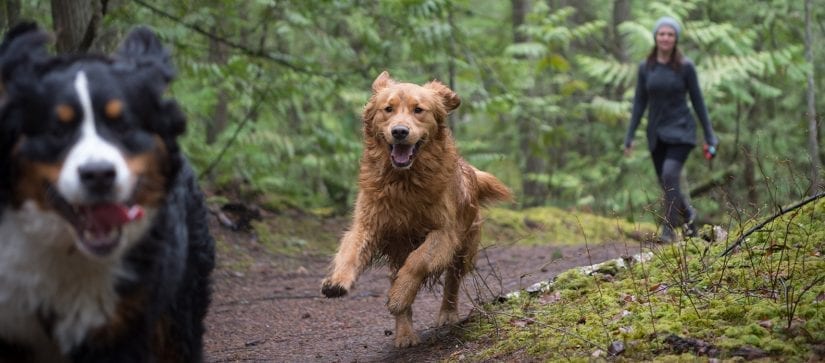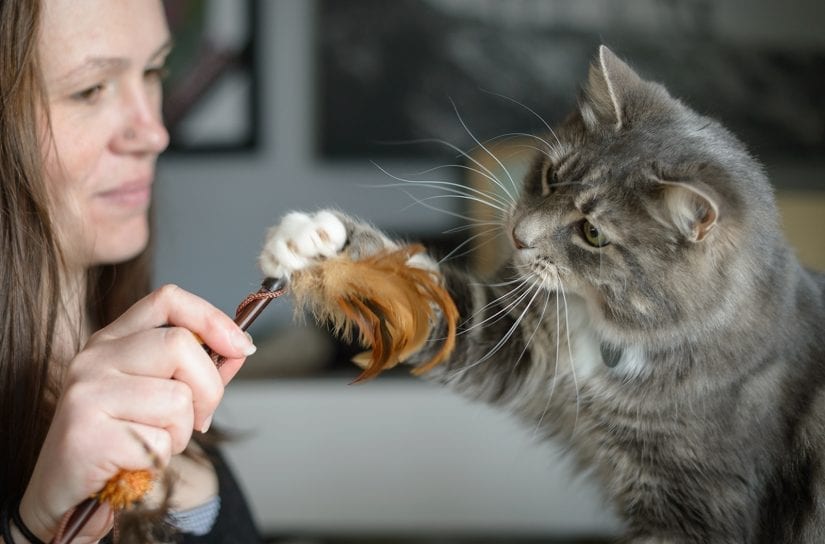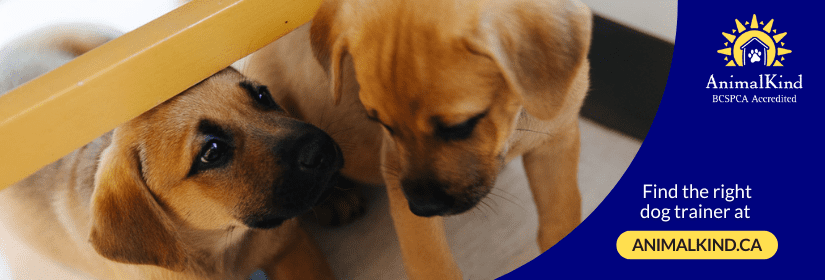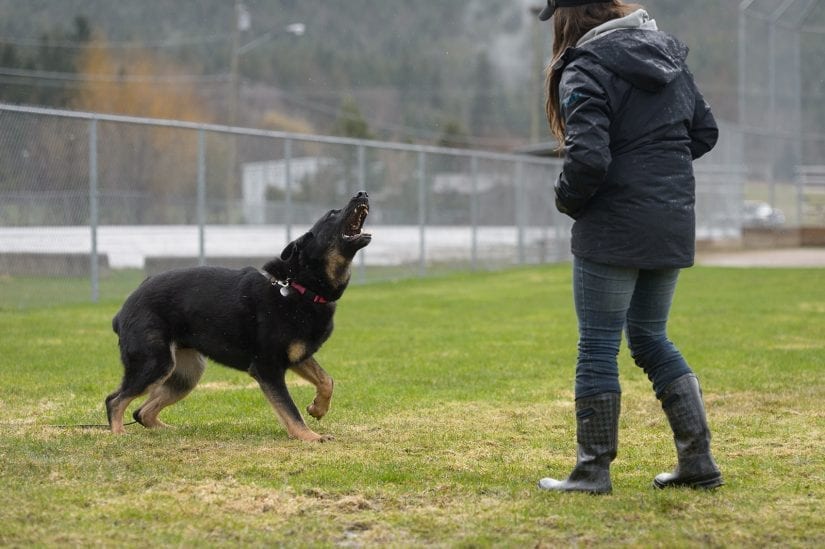Pet care & behaviour
Dogs form strong bonds with animals and people with whom they live. Most dogs can cope with separation from family members for a few hours. Some feel anxious, stressed, even panicked when left even for a few minutes.
Signs your dog may be suffering from separation anxiety
- Anxiety when you start to get ready to leave (panting, hiding, trembling, don’t want to eat)
- Damage to your front door, back door or windows (door you leave from)
- Injure themselves (bleeding paws, broken teeth, bleeding from mouth)
- Refuses to eat when you’re not home, even high value treats (eats them when you come home)

See your veterinarian if you suspect your dog is suffering from separation anxiety
Never punish your dog when she is anxious. She is not destroying things on purpose. Separation anxiety is a type of illness that is highly treatable with a combination of medication and behaviour modification (behaviour therapy). Your veterinarian can help determine whether your dog has separation anxiety or another condition.
Training options
- Take your dog to work if possible
- Walk him frequently and have water available in a spill-proof bowl
- Leave him with a sitter or at doggie daycare
- Have someone stay at home with the dog
Learn more about how you can deal with Separation anxiety – Preventing and reducing dog anxiety when alone (PDF).
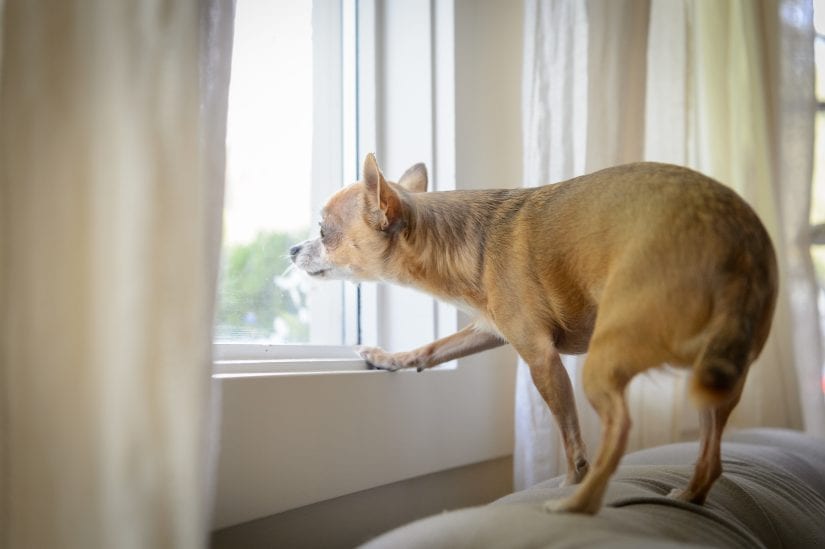
The beauty of dogs is that they are social animals who adapt to our lives. They come in every shape and size you can imagine. Our job as a guardian is to care for them, train, understand their behaviour and protect them. Dogs are wonderful companions who we need to keep happy & healthy. Learn the best way to welcome a new dog into your home.
Typical dog life span
Medium to large dogs: 8 – 14 years
Small dogs: 10 – 16 years
How to keep your dog happy and healthy
Dog food and feeding
Puppies need good quality puppy food. Adult dogs will thrive on a quality dry kibble. Consult the feeding guidelines provided on the bag or can for how much your dog should eat in a day. It is common for most dogs to eat twice a day — in the morning and at dinner time. Puppies may need three meals a day.
Some dogs need special diets. Talk to your veterinarian about the best diet for your dog.
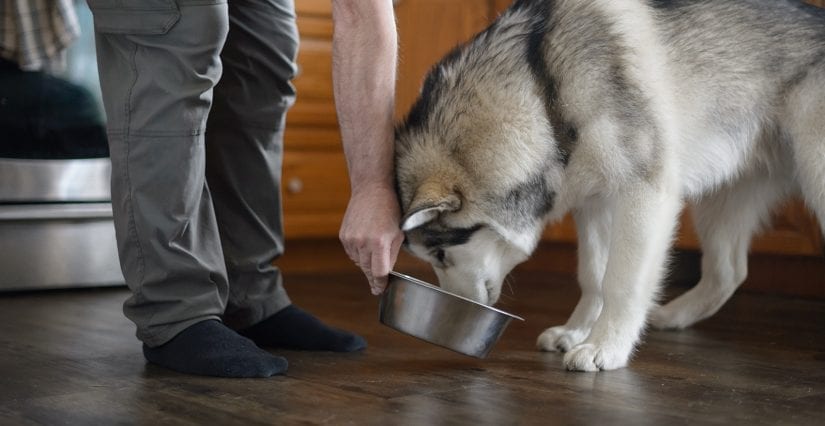
Treats
Dogs love treats. They’re important when training your dog. Use treats to reward your dog when he gets something right. It’s like saying thank you or paying him. You can even use your dog’s kibble as treats- they won’t know the difference. Save the yummy treats for things like calling him back to you or when he’s at the vet and nervous.

Your dog must have access to fresh water all the time. Change the water daily and wash out the bowl regularly.
Dog grooming, teeth and nail trimming
Choose a pet service business that prioritizes your dog’s welfare. Learn what to ask so you can confidently choose the right pet care provider.
Grooming
All dogs, whether short or long hair, need grooming. Longer haired dogs need to be brushed daily to keep mat free. Some might need to go to a dog groomer for grooming. Regular brushing will help you detect fleas or any lumps, bumps or skin conditions your dog may have.
Teeth
Just like humans, dogs need their teeth brushed for good oral hygiene. They can’t do it themselves so we have to brush their teeth. Use a soft tooth brush and dog tooth paste and try to brush every day. Never use human tooth paste. Go slow and make sure you have treats to give your dog after his brushing.
Nails
When standing, your dog’s nails should not be touching the ground. On average, nails should be trimmed once every month by a vet, dog groomer or yourself at home. Talk with your vet or local dog groomer for tips on how trim nails. Great care must be taken that you don’t trim too much. You can cut the blood vessel in the middle of the nail called the “quick.”
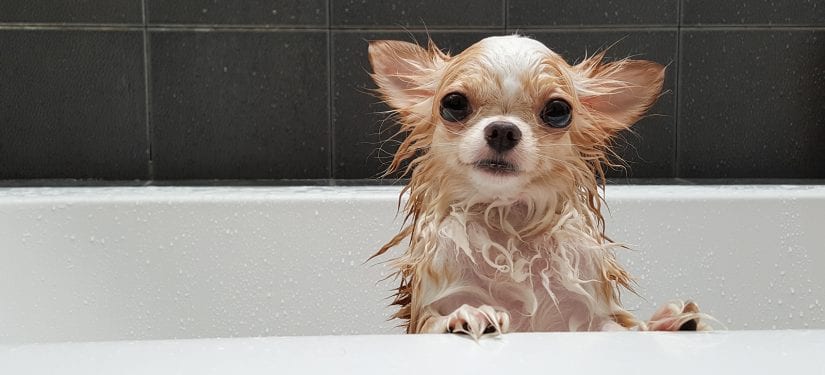
Exercise your dog
All dogs need exercise, no matter how big or small. Different breeds of dogs need different amounts of exercise but they all need to run and play every day. One or two short walks for a bathroom break is not enough. Leaving a dog in a back yard is not enough. Playing fetch, or taking your dog to an off-leash park where he can run around safely is best. If you’re not sure how much exercise your dog needs talk to your vet.
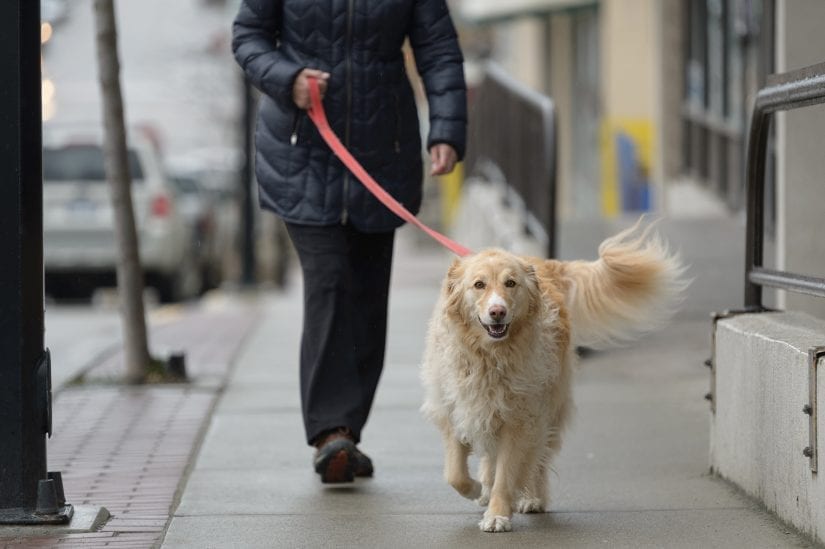
Things to do with your dog
Feeding
- Feed your dog in a dog food puzzle (feeding toy / smart toy)
- These toys get him to work to get the food and make him think
Chewing
- Dogs need to chew
- Chewing something safe and yummy for dogs is like us getting into reading a good book
Sniffing
- Let your dog sniff on walks – they’re born to sniff
- Hide treats and encourage your dog to sniff them out – this game will tire them out
Exercise
- Walk at least 30 minutes twice a day – older dogs may need short walks
- Hike with your dog, give him lots of time to sniff things
Play
- Play one-on-one games with your dog like tug-a-war or hide & seek
- Rotate through their toys so old toys become new ones to them
- Set up play dates for your dog to play with a dog friend
- Take your dog to the dog park for play with lots of dogs – if he’s good with other dogs
- Even dogs who don’t play may enjoy a visit to the dog park – make sure the other dogs don’t bug them and they’re not scared
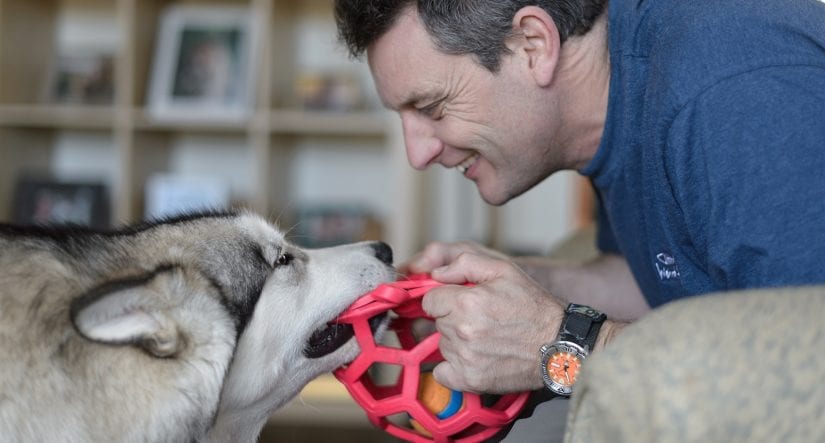
Identification (ID) for your dog
Nobody plans to lose a pet. Prepare for the unexpected and ensure your dog has two forms of identification.
It is also important to have your dog licensed – it’s the law. The license number will help people find you if your dog is lost. Check with your city, municipality or regional district about licensing and where to buy one.

Where should your dog sleep? Indoors or outdoors?
Dogs should be kept inside with their family. They are social animals who like to be around people. Set up an area with a comfy bed or blanket that your dog can call his own.
If you let your dog outside in a yard, it should only be for short periods of time. He should have a warm, covered place, away from wind, sun and rain. He must also have a dry place to lie down and fresh water. Best never to leave your dog outside unattended. If your dog is outside, learn what kind of shelter he needs.
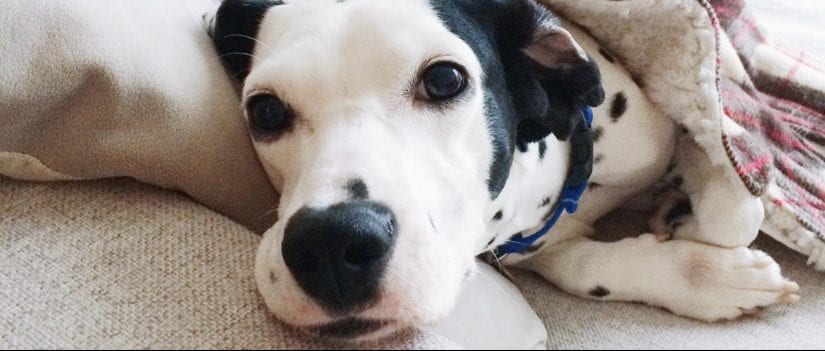
Medical care for your dog
When you first get your dog, take them to see a vet. After the initial visit with the vet, you should plan to go back at least once a year for a check-up and vaccines. Puppies will need to go back more often at first for vaccines.
It is also important to have your pet spayed or neutered to prevent unwanted litters. There are also many behavioural and health benefits to sterilization. Learn more about the benefits of spaying or neutering your pet.
Always watch for lumps and bumps, your dog not eating or a change in their behaviour. If you notice anything different talk to your vet. Find a veterinarian in your area.
Learn how to make your dog or puppy’s vet visit less stressful.

Training your dog
A dog needs to learn what we want him to do or not to do. Learning about his behaviour and how to teach him what you want is one of the best things you can do for your dog. If he knows exactly what you want he’ll be happier and safer.
Training a dog:
- Takes time
- Patience
- Should be fun
- Works best when you use treats – it’s like saying “yes” you got it right
- Takes practice – like people learning to play an instrument like the piano or guitar
Never use harsh verbal or physical corrections training a dog. Choose a humane trainer who follows the BC SPCA Position Statement Animal Training.
Did you know the BC SPCA has standards for humane dog training (PDF)? We can help you find a good dog trainer through our AnimalKind program.
Overcoming your dog’s behaviour issues
Some dog behaviour is normal for a dog but we find it annoying or think it’s bad. Other times dogs have behaviour issues. Jumping up, being afraid of people or things and reacting are just a few issues we see regularly.
We can help dogs, by better understanding and managing dog behaviour and ensuring they get enough exercise, enrichment and training.
Preventing and reducing excessive dog barking
Preventing or reducing excitable dog behaviour (PDF)
Preventing and reducing dog behaviour problems (PDF)
Yes! In fact, Petsecure Pet Health Insurance provides a complimentary six-week trial of pet health insurance with every dog and cat adoption.
With pet health insurance, you can lower the stress of paying for large, unexpected or unplanned expenses with a monthly premium.

Crate training or confinement training is important when you get a puppy or a new dog. Restricting their run of the house will help you teach them what to chew and what not to, as well as helping you house train your new pup or dog.
Learn more about crate training your puppy or dog, watch our video:
The BC SPCA recognizes that pet-friendly housing is limited in B.C. To make it easier to work together to create humane communities, we have developed resources to help renters demonstrate themselves as responsible guardians and assist strata councils and property owners in effectively managing their buildings and suites.
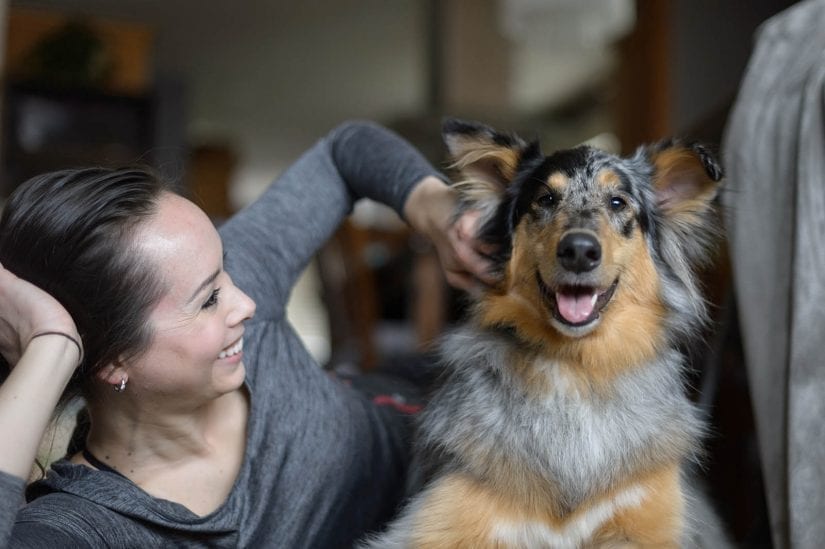
Learn more about finding pet-friendly housing for you and your pet.
Nobody plans to lose a pet. Prepare for the unexpected by following these steps to provide your pet with identification.
Provide two forms of identification
- A collar and tag: Keep a collar and tag on your pet with your home phone number and address.
- A form of permanent ID (microchip or tattoo): Pets can slip their collars at any time, but they can’t slip a permanent ID. Make an appointment with your vet to get your pet a microchip or tattoo today.
Register your pet’s permanent ID
Register your pet with the BC Pet Registry, B.C.’s first provincial pet ID database, owned and operated by the BC SPCA.
Registration guarantees that your pet can be traced by all participating veterinarians and animal care centres province-wide.
Remember: Permanent ID has little value unless it is registered. Give your pet the protection of registered pet ID today.
Learn more about the BC Pet Registry and how to plan ahead for peace of mind.
Keep your contact information up-to-date
Have you moved or changed your phone number? Don’t forget to update your pet’s ID! Contact your veterinarian with your new information so they can update their records.
Is your pet’s ID registered with the BC Pet Registry? Updating is easy! Log in any time to update your contact information.
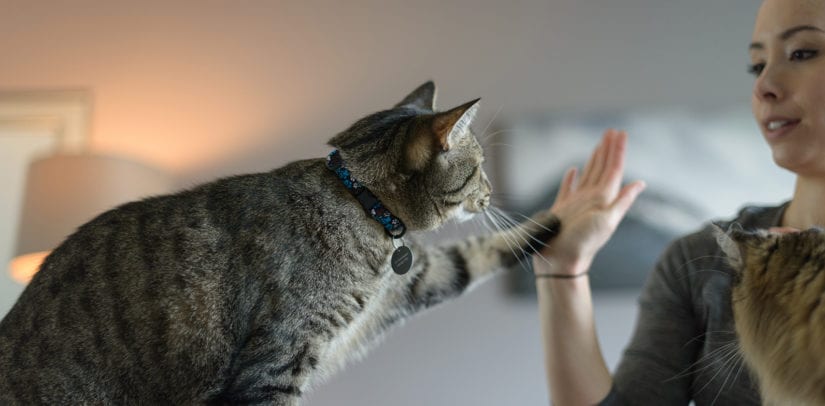
Licensing your pet
In most municipalities, a license for your dog is required by law. Call your local city/municipality to update the records on file or to get more information on licensing.

Reward-based training methods are shown to be more effective and better for your dog. Choose a trainer who uses only humane, reward-based methods – this means the trainer will never use fear or pain to train your dog.
The BC SPCA has standards for dog training and we recommend choosing a trainer who follows our standards and is accredited by our AnimalKind program. See if a BC SPCA-recommended AnimalKind dog trainer is in your area, and read our standards (PDF).

Choosing a good trainer
If an AnimalKind trainer is not in your area, look for a trainer that uses motivators like treats, food and play. Avoid trainers that use harsh verbal or physical corrections to punish your dog for unwanted behaviour.
Good trainers understand how dogs learn, know their behaviours and what motivates those behaviours. They will want to support and encourage you as you learn to train your dog.
Choose dog trainers who:
- train with rewards like treats, food and play
- use humane, science-based methods
- make training fun for you and your dog
- encourage you to watch or participate in training
- explain dog behaviour and body language
- have small class sizes (four to six dogs per trainer)
- work with veterinarians to help you care for your dog
- act professionally, and treat you and your dog with respect
Avoid dog trainers who:
- use punishment like shouting, pushing, hitting or leash corrections
- use shock, prong or choke collars
- refuse to let you watch or participate
- refuse to use treats or food rewards
- talk about “dominance” or “alphas”
- give medical advice or diagnoses
- guarantee training results
- make you feel uncomfortable, or make your dog scared or unhappy
Read a more detailed checklist on choosing a trainer.
The BC SPCA supports evidence-based force-free, humane training, and opposes training methods or equipment that cause anxiety, fear, distress, pain or injury. Learn more about the BC SPCA’s position on Animal Training.
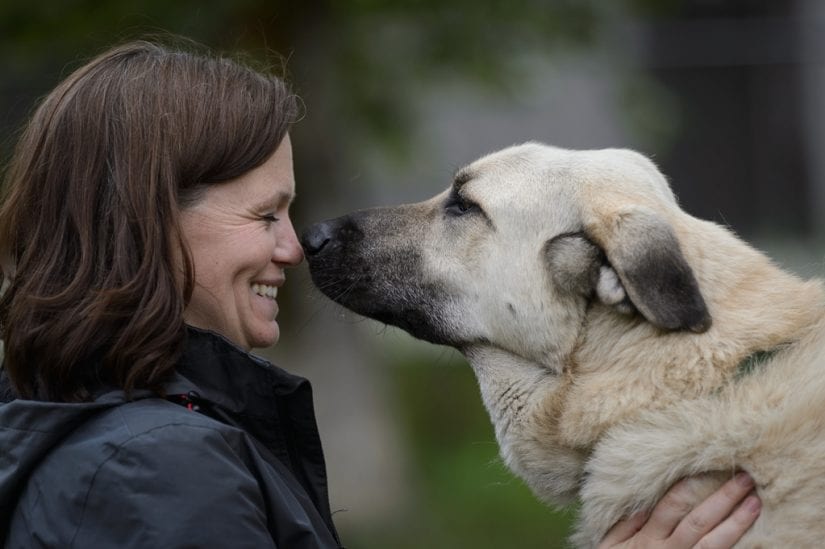
Fostering an animal means you take a BC SPCA animal into your home and care for them for us. While they’re in your home, we provide you with food and medical care until the pet is available for adoption. Foster families help animals recover from illnesses/injuries or provide them with socialization and love.
If you are unsure about adopting an animal, or unable to make the commitment at this time, fostering can be a great way to bring animals into your life.
While fostering is temporary, many foster families fall in love with the animal in their care and decide to adopt them.
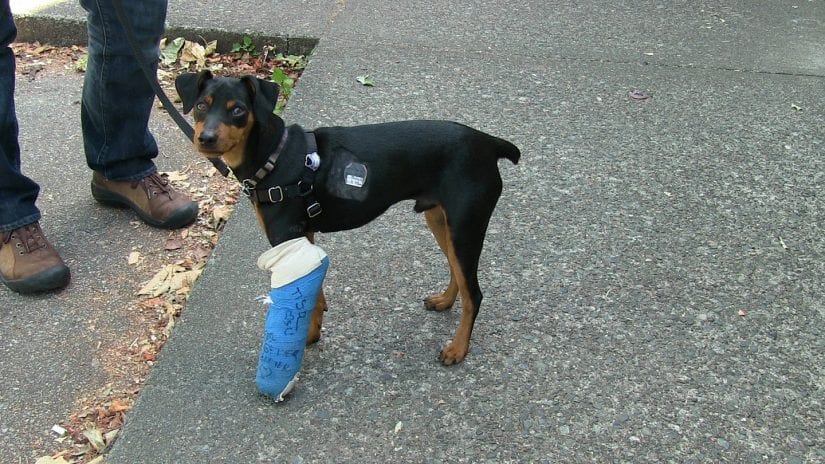
Some general things we look for in foster families:
- Length of commitment from a couple of days to several weeks
- Ability to spend time with the animal every day
- Daily monitoring of the animal as needed
- Ability to accommodate time to transport the animal, as needed, for appointments, treatments and weigh-ins
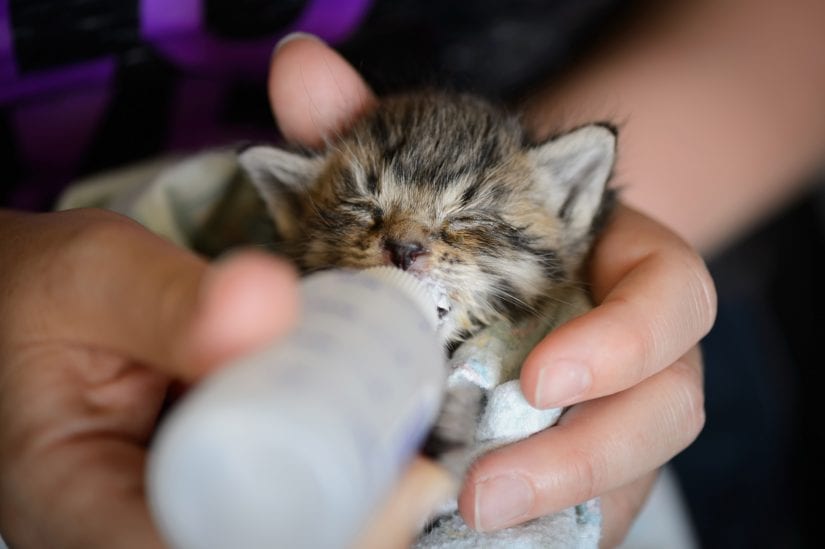
Fostering opportunities
- Nursing dog with puppies
- Nursing cat with kittens
- Orphaned kittens or puppies
- Sick or injured animals needing medical care
- Animals needing help with behaviour issues
- Puppies and kittens too young to be in the animal centre
- Horses and other farm animals
If you are 19 years of age or older, you can view foster care opportunities and apply to become a foster guardian. Learn more about our program, download fostering for the BC SPCA (PDF) and watch the video below.
For questions about fostering horses and other farm animals, email rescues@spca.bc.ca or fill out our horse and farm animal foster application form.
Socializing your puppy is one of the most important things you can do to help him have a happy and healthy life.
What is puppy socialization?
There is a window or “sensitive period” in which to socialize puppies. This period, often called socialization period, is the first three months of their life.
During this time, puppies accept and like things they meet and have a good experience with. It’s not that they don’t experience fear, they do, but we need to prevent them from being scared during this sensitive period. We need to teach puppies about strangers and new things, and help them if they’re nervous.

Sometimes people keep puppies at home until they are fully vaccinated at around four months of age.
While it is important not to let your puppy interact with sick dogs, and to avoid places where lots of dogs go (like the dog park) until they are fully vaccinated, it is not necessary to isolate your young puppy!
You can still take him outside and socialize him with healthy, friendly dogs. Make sure he is up-to-date on vaccinations to minimize the risk as much as possible.
Make sure your pup has lots of good experiences so they learn that people, animals and other things are good.
Socializing your pup
1.) Introduce your puppy to:
-
- Different people
- Social dogs
- Other social animals
- Different sounds
- Different environments
- Trips and different locations
2.) Handling your pup
Handle your pup so he gets use to having his toes, ears and other body parts touched. Dogs aren’t born used to being handled and we need to teach them it’s OK. Give treats after handling.
Learn more about teaching your puppy to be good with handling, watch our video:
3.) Visit your vet’s office just for puppy treats
Make special trips to your vet. Ask your vet to give your puppy a treat when you visit. Try to visit the exam rooms and back of the hospital so your pup is familiar with the hospital and staff. Give treats in each room!
4.) Start puppy socializing classes
Find a puppy socializing class and start classes right away. If your puppy is not well, speak with your vet before going to class.
5.) Give puppy play time by himself
Give your pup some toys and let him play by himself. This may help with over attachment to you.
6.) Puppies need crate or confinement training
Teach your pup he has a safe place to go sleep or just to get away from things he doesn’t like. Give him choice. For example, if he doesn’t want to be in the room when the kids are playing or visitors are over, let him go to his crate. Forcing him to stay may make him anxious or afraid of the people you’re trying to socialize him with.
Your goal is for your puppy to have many different experiences during his first three months. Make sure he has good experiences and use rewards to help him build strong associations.
7.) What if I don’t socialize my pup?
Puppies who are not socialized during their “sensitive period” may be fearful and aggressive. If they have no experience with different things or people, they can end up afraid of them.
8.) Socializing older puppies
Unfortunately, the window for socializing closes at about 12 weeks. You can still help an older dog get used to new things, but they may never be completely comfortable.
Find a dog trainer who offers puppy socialization classes near you!
Search the list of AnimalKind accredited trainers the BC SPCA recommends:
When your dog pulls on his leash it can be frustrating and put both you and your dog at risk. Your dog might hurt his neck from pulling or you might slip and fall.
No-pull harness for dogs
A gentle and easy way to stop a dog from pulling is to use a special no-pull harness designed to prevent pulling. There are different types of no-pull harnesses on the market. Find one that works for you and your dog.
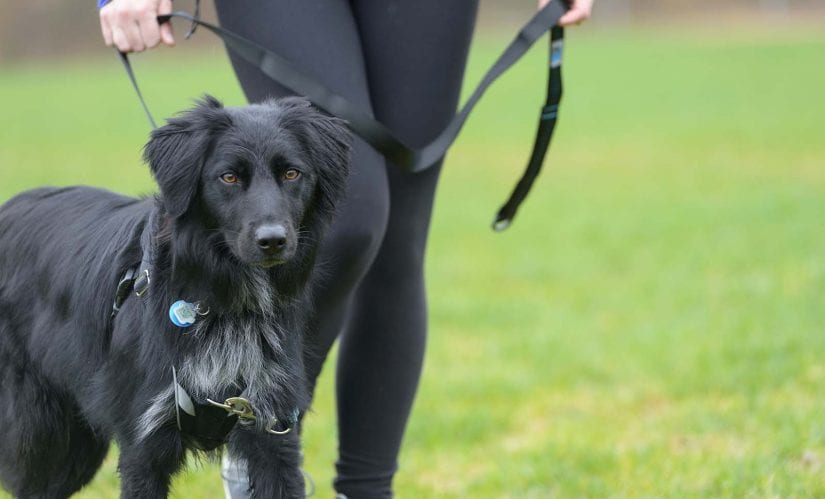
Training dogs not to pull
Train your dog not to pull on his leash. Dogs and puppies have to learn that it’s more rewarding for them if they don’t pull. A qualified, reward-based trainer can teach you how to train him not to pull and make it fun. Did you know the BC SPCA has standards for humane dog training? We can help you find a good dog trainer through our AnimalKind program.
Read the BC SPCA’s position on animal training.
Avoid prong collars
When a dog is wearing a prong collar and pulls, the sharp metal or plastic prongs stick into his neck, which causes pain. To make the pain stop the dog has to stop pulling. Prong collars cause fear and anxiety, and may make your dog afraid of you.
Bringing a new dog into your home is an exciting time. For a dog going into a new home, it will be stressful. You know where everything is and you’ve been through your home lots of times. For a new dog this will be the first time he’s seen your living room, your kitchen, or even seen your cat.
Remember everything is a first for him in your home. Think of it being like when you moved into a new home or got lost in a new town. Have patience, understanding and be forgiving if your new dog doesn’t know something.
To make it easier on your new dog and to help him get use to your home, it’s best to plan for his arrival and his first few days. Below are some ideas of what you will need to get and plan for.
Want to print this page as a checklist (PDF)?
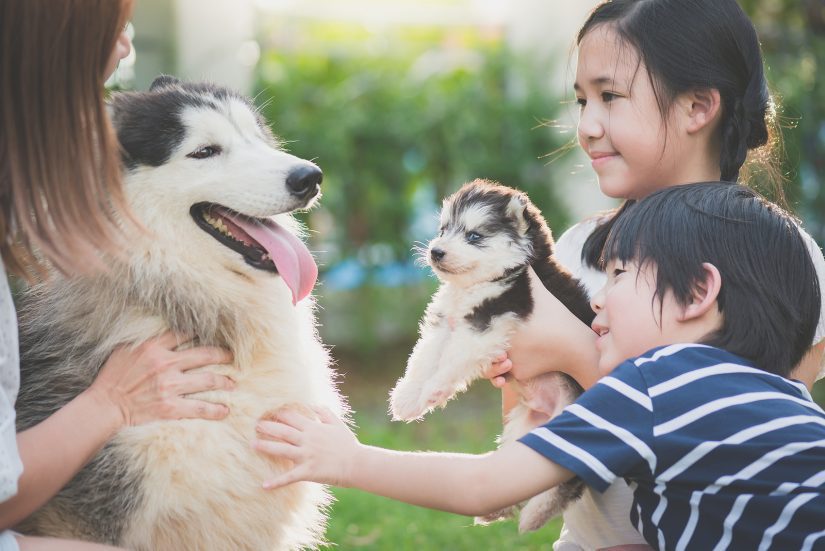
Before you bring your new dog home
Dog supplies needed
- Food: Make sure you have some of his previous food so you can mix it with his new food if it is different. Switching to a new food without a slow transition can cause diarrhea.
- Food & water bowls: Have the right size bowls for your dog. Check with your veterinarian to see if your dog’s bowls should be elevated off the ground.
- Collar & harness: Put a collar on your dog even if you only walk him on a harness. Collars will have his I.D. tag and license on. Do not use a choke, prong or any collar that causes pain, stress or injury.
- Dog toys: Toys are an important part of helping your dog engage in normal dog behaviour. Get toys that are appropriate type, size and safe for your dog.
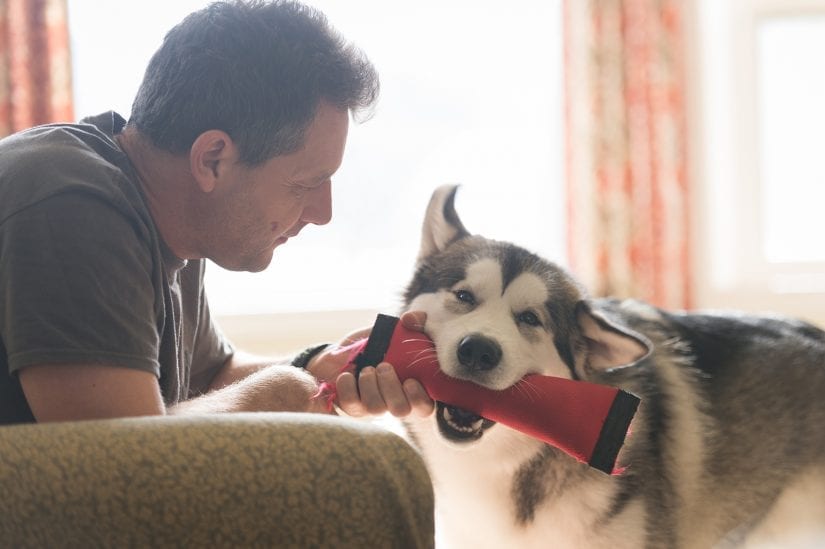
- Dog puzzle feeding toys: Also known as smart or work to eat toys, they’re a fun way for your dog to work to get his food. These feeding puzzles engage your dog in doing natural scavenging behaviour. Some dogs will need to be shown how to use them at first.
- Kong: Kongs that are the right size for your dog are great smart feeding toys. You can fill them with food and freeze them for your dog.
- Bed: Get one or two comfortable beds and have them ready for when he comes home. Don’t forget his bed from the animal centre, other home or rescue. It might be used however its familiar and will help when he moves in to lower stress.
- Crate: Make sure the crate you get is the right size for your dog. A puppy will need a smaller one and as he grows, he’ll need more space. Your dog must be able to stand up, turn around and lay so he can stretch out comfortably in his crate.
- Pee pads/puppy pads: If you have a puppy be prepared. Where will you put the pee/puppy pads, how will your pup know where they are?
- Exercise pen: It’s always a good idea to use an exercise pen for puppies or new smaller dogs. These are ideal when you can’t supervise and you’re working housetraining and chewing issues.

Things to plan for before your new dog comes home
Where will he…
- Sleep
- Go to the washroom – if it’s a puppy where will the puppy pads be, where will he go when outside?
- Stay during the day – a crate, a dog proof room, at day care, with you?
- Stay during the night – a crate, a dog proof room, with you?
- Crate – will his crate be in the kitchen, living room or your bedroom?
- Walk – where will you walk him, can he go to the dog park, what if he doesn’t like other dogs?
How will you…
- Housetrain an adult dog or puppy – what’s your schedule? Puppies need out more often.
- Reward him – for going to the washroom outside, where will you keep treats so they’re handy.
- Train him – yourself or hire a qualified humane trainer.
- Crate train – not all dogs are crate trained, you’ll need to train him & crate train puppies.
- Introduce to cat – has he met cats before, how do you introduce and keep your cat safe?
- Handle your pup – it’s important to teach your puppy to be good with handling, they’re not born liking it.
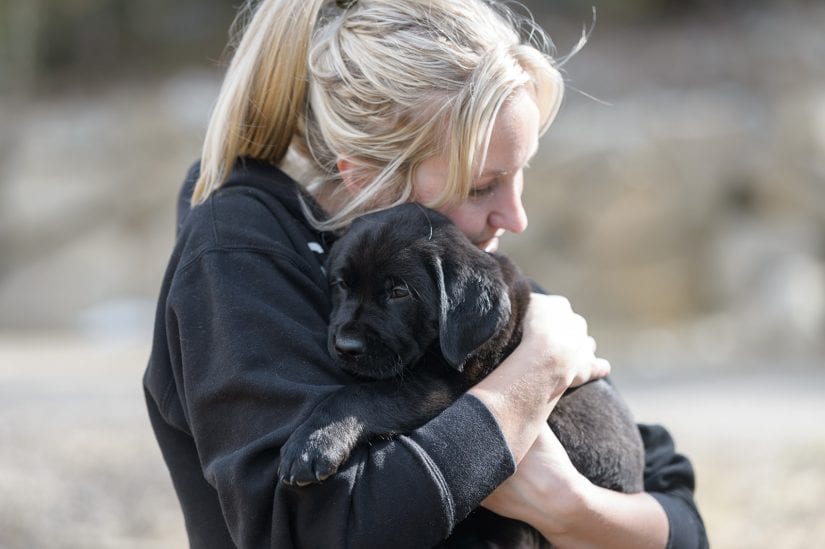
How…
- Much food – should you feed him, when and how often?
- Long in crate – how long will your dog or pup be in a crate? Too long is cruel and not fair.
- Dog proof room – setup a room with safe dog toys, bed, food & water when you can’t supervise.
- Trainers – how will you choose a qualified humane trainer?

What about…
- His things from animal centre, other home, rescue – take as many of his things as you can. His bed and toys will help when he has them in his new home.
- Routine – set up a schedule so your dog learns your routine, this will help make things predictable for him.
- Veterinarian – when will he go for first visit, which veterinarian will you use?
- Behaviour problems – what will you do if there are some you didn’t expect?
- Elevator – has he been in an elevator before? How can you help him if he’s scared?
- Daycare, dog walking, grooming – learn what questions to ask when choosing pet services
Remember, you are not alone anymore when choosing a pet service like daycare, boarding, walking, or grooming that prioritizes the welfare of your pet. Take advantage of the resources available at the BC SPCA AnimalKind website.
It’s important to try and think of everything you might need for your new dog. Get your home set up beforehand, so when your dog does come home you can focus on him and helping him move in.
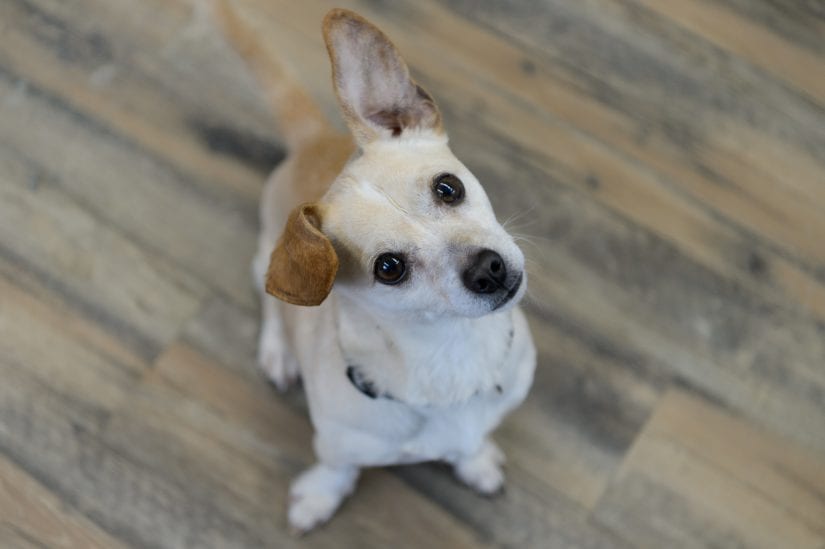
New dog moving in
Day one
-
- Bring him in the house on leash and let him sniff – let him get use to your home.
- Take him out regularly for bathroom breaks – don’t forget to reward him with a treat after he goes.
- Remind kids how to approach him and that the house is all-new to him.
- Take him for a walk – bring treats and let him sniff the neighbourhood.
- Teach family, neighbours and strangers how to approach your new dog for petting.
- Put his bed and some toys from his previous home out.
- Your goal during his first day is to help him learn about your home and have good experiences.
Note – don’t bring your new dog or puppy home and just leave him alone while you go out.
What’s next?
- Veterinarian visit – take your dog to the vet for a checkup and a microchip if he doesn’t have one.
- Learn about basic dog care.
- I.D. your pet and get your dog license – visit your local animal control and get a license. It’s the law and it will help get your dog back to you if he ever gets lost.
- Contact the animal centre, previous owner or rescue with questions.
- Have fun!
Print this page as a checklist

Is your pet’s microchip, tattoo or license registered with the BC Pet Registry? Updates can be made at any time. Registered users can also add additional forms of identification (ID) to their pet profile.

Contact your veterinarian
Call your veterinary clinic so they can update their records. You can also register your pet’s tattoo with the BC Pet Registry.
Contact your municipal animal control office
In most municipalities, you must license your dog. Contact your local animal control office (e.g. City of Vancouver Animal Control) to update your phone number, address or family members on file. You can also register your pet’s municipal license with the BC Pet Registry.

Puppies need patience, time and supervision. Start with planning what you will need and what your pup will need when they come home.
Supplies
- Food
- Harness, collar and ID tag, and leash
- Toys – chew toys, fun toys and feeding toys
- Bed
- Crate
Puppy proof your home so your puppy doesn’t get into things it shouldn’t.
Plan where you want your pup to go to the bathroom and give them treats when they go in that spot.
Crate training is an easy way to help housetrain your pup and prevent him from getting into things.
When you bring pup home, start handling and giving him treats after so he learns handling is a good thing.
How do I socialize my puppy?
Don’t forget, if your puppy is under 12 weeks he’s at an important time in his life. Socialize him now and give him good experiences so he learns the world is a fun and safe place.
Check out BC SPCA AnimalKind resources for puppy guardians
- Learn about socialization and training appropriate chewing.
- Get the answers to the when, how and why of puppy training.
- Follow the step-by-step guide for new dog guardians.
- Know how to find the best dog trainer.
Sometimes, dogs can get overly excited while out and about, jumping up on you or others. We need to understand why they’re doing that and how we can teach them to do something else.
Learn about calming an overly excited dog, watch our video:
The veterinarian’s office doesn’t have to be a scary place for your dog or puppy. Treats, a towel and plenty of petting can help. Not to mention lots of love!
Learn more about taking your dog to the vet and helping them learn it isn’t a scary place, watch our video:
If your dog has not been indoors for a long time
Start slowly. Your dog needs to get used to being indoors. Put a leash on her and bring her inside for short periods, even for just a few minutes to give her a tasty treat.
Toss treats in the doorway to encourage her to enter if she is too nervous. Never force her. Gradually have her spend more time inside with you. Once she is relaxed, give her time off leash in the house.

Feeding helps a dog get comfortable with being indoors
- Provide your dog with a mat when you feed her outside.
- Feed your dog each meal on the mat; she can be standing, sitting or lying on the mat.
- Remove the mat once she is finished eating. Bring it out again with the next meal.
- Once she is comfortable eating on the mat, bring it indoors along with your dog on a leash at feeding time.
- Feed her on the mat in the house.
- If she doesn’t want to come inside, continue feeding on the mat but move it closer to the door.
- Toss treats in the doorway for her to eat, while allowing her to go back outside if she’s too nervous.
- Your goal is to have your dog eating on her mat in the house and relaxing.
If your dog will come indoors, but she pees inside, chews on things, barks or jumps on people
Learn how to house train an adult dog that is used to living outdoors.
Was your dog outdoors because of a behaviour problem? Learn about dog behavioural issues and how to fix them.
What are some issues with keeping a dog outdoors?
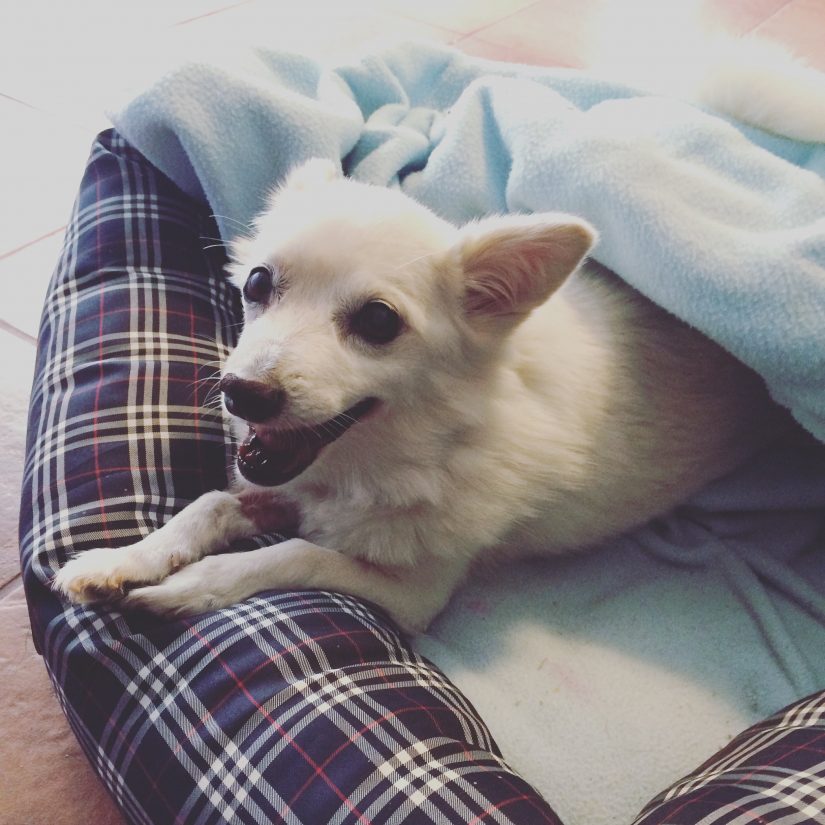
Spaying or neutering your dog, cat or rabbit doesn’t just help prevent accidental litters. It also has health and behavioural benefits for your pet.
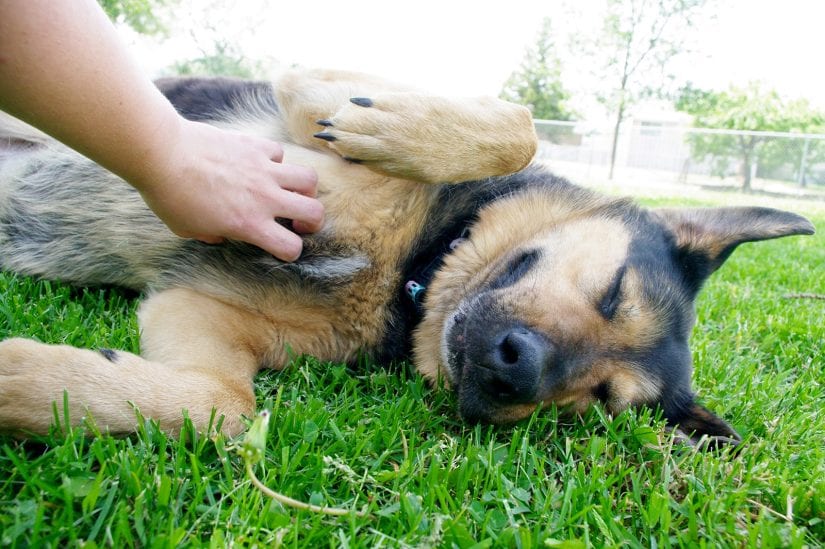
Benefits of spaying and neutering your pet
Generally, neutering decreases aggressive behaviours in pets
- Neutered dogs are calmer and less likely to bite, attack or get into dog fights.
- Neutered cats and rabbits don’t have the drive to mark and protect their territories and are less likely to spray or get into fights, resulting in fewer injuries.
Spaying ends the heat cycle in females
- Heat cycles are usually twice a year for dogs, and result in many unwanted behavioural changes including possible aggression.
- Cats generally go in and out of heat every three weeks between January and November.
- Female cats in heat can howl relentlessly, may try to escape to mate, spray or urinate inappropriately and attract unwanted male cats.
Spaying and neutering lowers the chance of reproductive health problems
- Studies show that spayed/neutered pets, on average, live longer.
- Spaying eliminates the risk of ovarian and uterine cancer and pyometra (life-threatening infection of the uterus) in dogs, cats, and rabbits. Up to 80% of unspayed rabbits will develop uterine cancer.
- Spaying reduces the risk of mammary cancer in cats, dogs, and rabbits.
- Neutering eliminates the risk of testicular cancer in all species and lowers the risk of prostate problems in male dogs.

Spaying and neutering eliminates the drive to reproduce
- The likelihood of your male pet wandering away or escaping will be decreased.
- Male dogs can smell a female in heat up to a kilometre away.
- Once neutered, your pet will be less frustrated and may become a calmer companion.
Spaying and neutering provides an opportunity to have other important procedures performed
- Other procedures, as necessary, can also be done at the time of the operation.
- This includes procedures such as an identification tattoo or microchip, teeth cleaning, hernia repair and baby teeth removal.
Spaying and neutering prevents accidental pregnancies
- Research shows that the majority of cat pregnancies are unintended.
- Pregnancy is hard on the mom physically. Prenatal care, birth complications, and puppy/kitten care can be costly.
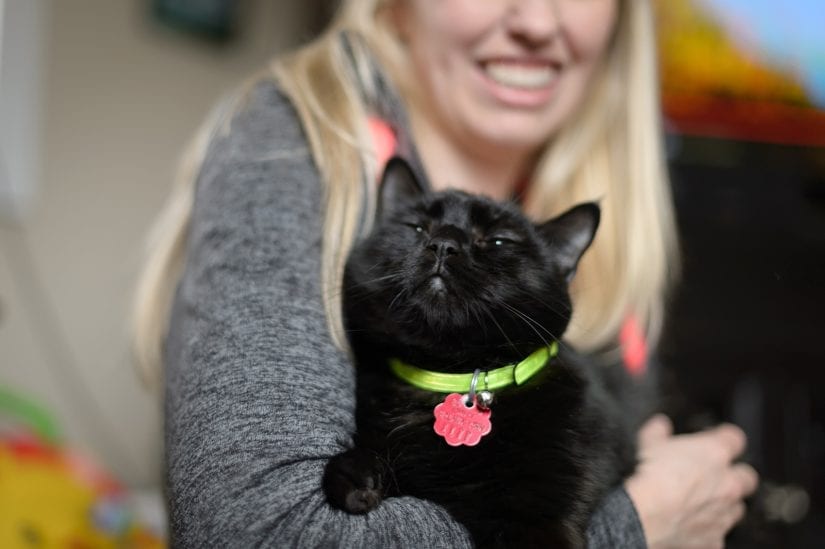
Spaying and neutering helps your community
- Research shows that, as an individual, you help reduce overpopulation issues in your community when you spay or neuter your pet.
- Spaying and neutering your pet helps reduce the number of stray or unwanted animals in your community.
- Reducing the amount of stray animals helps prevent other pets and wildlife from being injured or killed in fights.
- Fixing your pet helps lessen the amount of stray animals getting into or causing car accidents, getting into garbage cans and damaging property.
Learn how fixing your cat helps combat the cat overpopulation problem and how you can take action in your community.
But aren’t there also some risks to spaying and neutering?
Yes, any surgical procedure carries some risks. However, the overall benefit outweighs the risk for most animals. Talk to your veterinarian about the best choice for your pet.
- Risks of surgery and anesthesia include pain, bleeding, infection, the incision opening up, or a bad reaction to the drugs used.
- Spaying and neutering removes reproductive hormones from your pet’s body. This has many benefits but also has minor effects on bone development and other body systems.
- Several recent studies show higher rates of some bone and joint problems and cancers in purebred dogs spayed and neutered as puppies. These studies have attracted a lot of attention.
- The studies involved small numbers of dogs who were already predisposed to the problems being studied because of their breeds. More research is needed to understand these risks.
- If you are concerned about risks of spaying and neutering, don’t just consult the internet. Talk to your veterinarian about what is best for your pet.

I still have questions about spaying and neutering
Shouldn’t a female cat/dog have a litter before being spayed?
Will spaying/neutering change my pets personality?
Will my pet become fat/lazy once it is fixed?
What does spay or neuter mean?
When should my cat/dog/animal be fixed?
What does it cost to spay/neuter my cat/dog/animal?
Find out more about the benefits of sterilizing your pet and how February is spay/neuter awareness month.
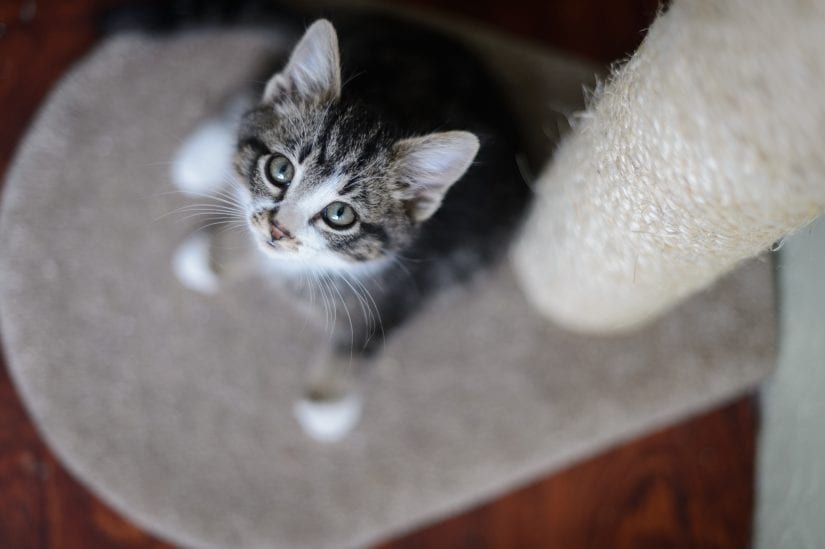
Resource guarding is when dogs feel they have to guard their food, toys and other things from people or dogs. It’s an innate feeling that they have to guard something, as if like their life depended on it.
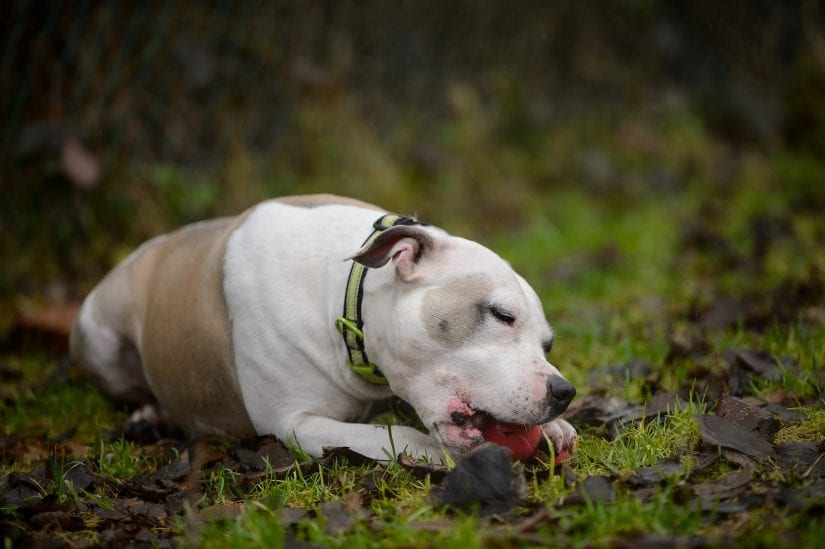
You can help prevent resource guarding from becoming a bad habit for your dog by teaching them when they’re puppies that it’s fantastic to have things taken from them.
Learn more about resource guarding, watch our video:
Looking for more information on why a dog might be aggressive? Download our Aggression to people – Reducing and managing dog aggression towards people (PDF) guide.
Dogs bark for many different reasons. Figuring out the why behind your barking dog is the first step to treating the problem. Here’s a list to start with:
-
- Is your dog suffering from boredom?
- Does your dog have anxiety being alone?
- Is your dog fearful?
- Is your dog attention-seeking?
- Is your dog a ‘watchdog’?
1.) Boredom barking
Feed him with smart toys. Make sure he’s getting exercise and mental stimulation.
2.) Anxiety barking
See your veterinarian for diagnosis and treatment plan.
Find more information in our fact sheet Separation anxiety – Preventing and reducing dog anxiety when alone (PDF).
3.) Fear barking
Teach your dog that the things he’s afraid of are fantastic and predict fantastic things. Choose a humane trainer to help you and your dog.
Did you know the BC SPCA has standards (PDF) for humane dog training? We can help you find a good dog trainer through our AnimalKind program.
4.) Attention-seeking barking
Many dogs bark to get attention or to make their guardian do something such as take them out or play with them.
To stop attention-seeking barking, stop rewarding him for it.
Don’t throw the ball, open the door or let him out of his crate if he is barking. These are all rewards to your dog.
He barks = ball goes away
He’s quiet = ball gets thrown
5.) Watchdog barking
Teach him to do something that isn’t compatible with barking. Teach him to get his toy so he can’t bark because he has his toy in his mouth.
Give him a time out
Teach him any time he barks more than a few times it results in him going in the penalty box.
Time out
- After he barks say “quiet”
- Next bark say “too bad” and immediately put him in another room
Eventually he’ll learn his barking causes him to be removed from the action.
Veterinary help for barking dogs
Deaf, geriatric and dogs suffering from separation anxiety may all bark excessively. Check with your veterinarian to see if there are any health reasons for the excessive barking.
Caution
Do not use any tools or techniques that cause physical or emotional distress, such as electronic shock collars. Learn why your dog is barking and then train him or provide enrichment. Barking is a natural dog behaviour.
Resources
BC SPCA Position Statement Animal Training
Barking – Preventing or reducing excessive dog barking (PDF)
A dog may show aggression like growling, barking, lunging or biting for many reasons. Aggression is a normal dog behaviour but it can cause stress, injury or pain to your dog, you or others.

Avoid things that cause aggression
Most aggression comes from fear. Look for things your dog reacts to aggressively and stay away from them. Strangers, men, dogs or someone trying to pet him might be scary. If they’re too scary your dog might react to make them go away. Learn how to reduce and manage aggression towards people (PDF) or aggression towards dogs (PDF).
Put safety measures in place
Put safety measures in place to protect other people or dogs from getting hurt. If your dog has bitten someone or another animal, teach him to wear a muzzle so you feel safe and others are safe. Muzzles are OK.
Seek professional help for your dog
Ask your vet or a reward-based humane trainer for help. Did you know the BC SPCA has standards for humane dog training (PDF)? We can help you find a good dog trainer through our AnimalKind program.
Read the BC SPCA position statement on animal training.
It takes time to help change a reactive dog’s behaviour. Here are some tips for dealing with dog reactivity.
Search the list of trainers the BC SPCA recommends and find a dog trainer who specializes in aggression:
- Go to animalkind.ca/find-services
- Click on “dog training companies by training need”
- Choose “aggression” from the drop-down list
There are lots of things to consider before you get second dog:
- Is your dog ok with another dog living in his home?
- Does he just like his doggie friends at the park?
- Maybe fostering a dog will help you and your dog test the waters?
- What are the extra costs of having a second dog?
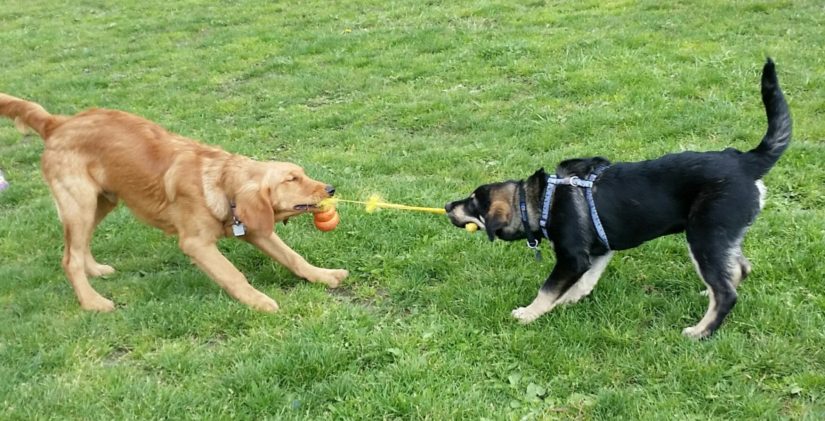
You may think it’s a great idea however your dog may not want a live-in buddy.
Learn more about whether you should get a second dog, watch our video:
Puppies are a lot of fun and, like toddlers, they need to learn where to go potty. Remember it’s up to us to teach them and reward them when they get it right.
When house training your puppy, consider training him to like a crate. Crates can help with house training and chew training.
Training tip
Never punish your puppy for not going where you want or for not doing what you want him to do. We have to teach animals what we want them to do. If he doesn’t stay by your side he may not know that’s what you want. Reward him when he’s beside you. Use lots of treats and when he’s older you can use treats and life rewards.
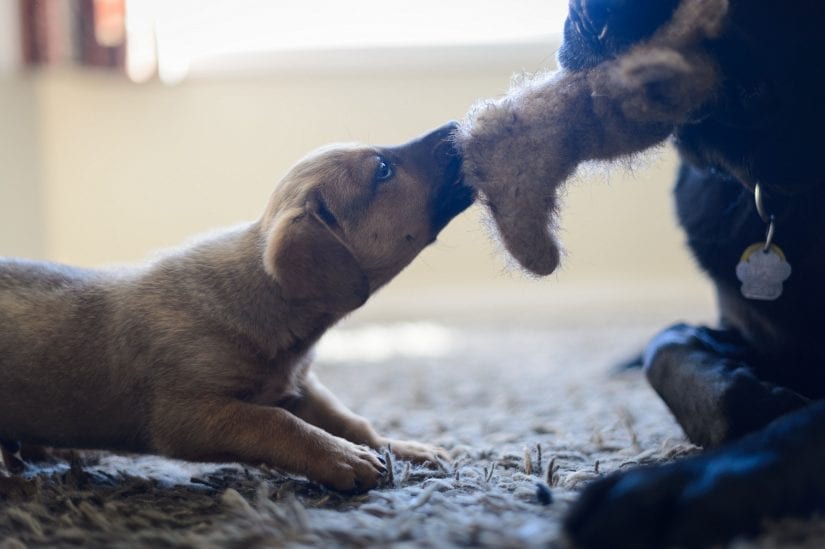
When we do human things to dogs like petting them, we have to make it worth their while. Dogs aren’t born liking being touched and might not want to be pet by us.
If your dog used to like being petted and now doesn’t, she might be sore or have a medical problem. Check with your vet.
Learn more about how to approach a dog for petting so they learn to enjoy it, watch our video:
Dogs are social animals who like being around people and, in many cases, other dogs. If they live outdoors this often means they live in isolation.
Dogs left outdoors must have an outdoor kennel that is weather and draft proof.
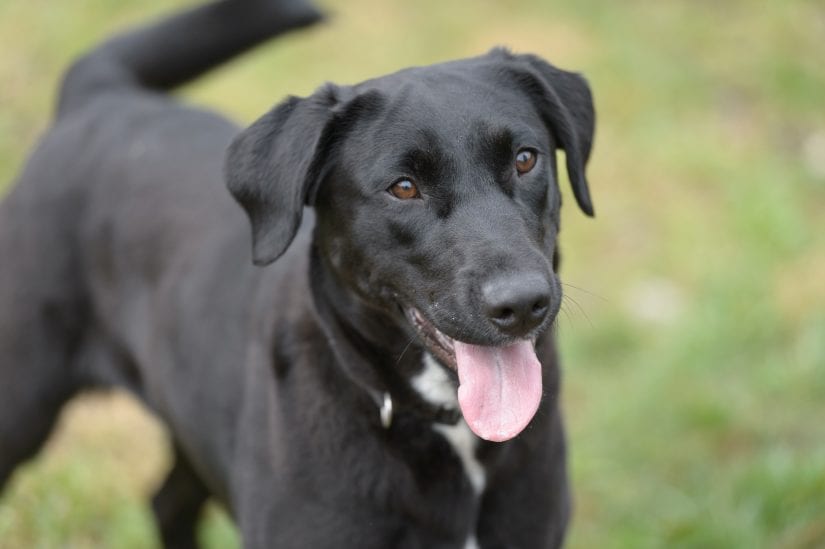
Kennel must be:
- Elevated
- Insulated – both walls and flooring
- Lined with lots of dry bedding (use straw versus hay; straw is dried out and hollow while hay is moist and will mold)
- Checked regularly to make sure bedding is dry
- Have an entrance that protects the dog from wind, rain and snow
- Fresh water in a spill-proof bowl must always be available. If the weather hits sub-zero temperatures, you should purchase a heated water bowl.
A social species, even outdoor dogs need to get daily exercise, play and time with people.
Learn how to transition a dog living outdoors to living inside.
“Spaying” and “neutering” are surgical procedures used to prevent pets from reproducing. In a female animal, “spaying” consists of removing the ovaries or uterus and ovaries. The technical term is ovariectomy or ovariohysterectomy. For a male animal, “neutering” involves the removal of the testicles, and this is known as castration.
In addition to preventing unwanted offspring, spaying or neutering has many health and behavioural benefits to the animal.

Where would you like your dog to pee and poop outdoors? Here’s 3 steps to help train your dog. To prepare, decide on the area and have lots of special treats ready to give him every time he goes in his area.
1.) Management
Prevent any opportunities for your dog or puppy to have an accident in your home by keeping him with you on a leash, or crate him when you can’t be there to supervise. Control his environment as much as possible.
Puppy house training tips:
-
- Pups need to go outside more often than adult dogs.
- Try to get them out every hour or two so they don’t have accidents
What to do if you’re not home:
-
- Make sure he’s been outside before you go and has an empty bladder.
- Confine him in a crate or dog proof room.
- Manage him like this in the house for at least three weeks.
2.) Train your dog where to go
Start a routine of visiting an area you do want him to pee and poo in.
-
- Visit this area in the morning, after meals, and before bedtime.
- Go with him to the area. Yes, every time!
- When he pees or poos in the area say “yes” and reward him with a yummy treat.
- Reward him every time he goes outside.
3.) Loosen up & interrupt
No accidents for two weeks? Now loosen up your management in the house. If your dog or pup starts to go interrupt him with ‘Uh Uh’ and redirect him to outside. Don’t scare him, just a gentle oops. Don’t forget to reward him for doing his business outside.
-
- If your dog has an accident during the three weeks ignore it. Clean it up when he’s in the other room.
- Remember they don’t pee and poo in the house on purpose. We have to teach them when and where to go and make it worth their while.
- Do not punish your dog even if it’s only 10 seconds after the accident. This is ineffective and abusive and your dog will learn to instead – be afraid of you.
- If your house trained dog starts to have accidents get a veterinarian checkup. Make sure there are no medical concerns.
If you are adopting your cat, dog or rabbit from the BC SPCA, spay/neuter is included in the adoption fee.
For other animals, the cost of spaying or neutering your pet depends on many factors and will vary according to each pet’s circumstances and needs. For example, a large dog will cost more than a small dog. If your pet is overweight or in heat this can also add to the cost. Contact your veterinarian to get a more accurate idea of the costs involved for your pet.

The cost of spaying/neutering is small when compared to other costs of pet care, such as what you will spend on food for your pet over their lifetime.
Consider the possible costs if you do not spay or neuter. If your pet should wander off in search of a mate, you may be faced with paying fines and impoundment fees. You may also be faced with the additional costs of caring for puppies or kittens for whom finding homes may be difficult. Worse yet, think of the costs should your pet be injured while roaming for a mate.
Spaying or neutering is a one-time investment with life-long health and welfare benefits for your companion.
If you require financial assistance, learn about low-cost spay/neuter programs in B.C.
Vaccines protect your pet from getting diseases that are contagious and possibly fatal. Vaccinating your pet doesn’t just protect your pet, it also protects other pets in the community who may be too young or sick to be vaccinated. Vaccines also protect against some diseases that can be passed from pets to people.
All cats and dogs should receive vaccines. Your veterinarian can help determine which vaccines are necessary and the best schedule for vaccinating based on your pet’s lifestyle and age.
Talk to your veterinarian about vaccines for your pet.
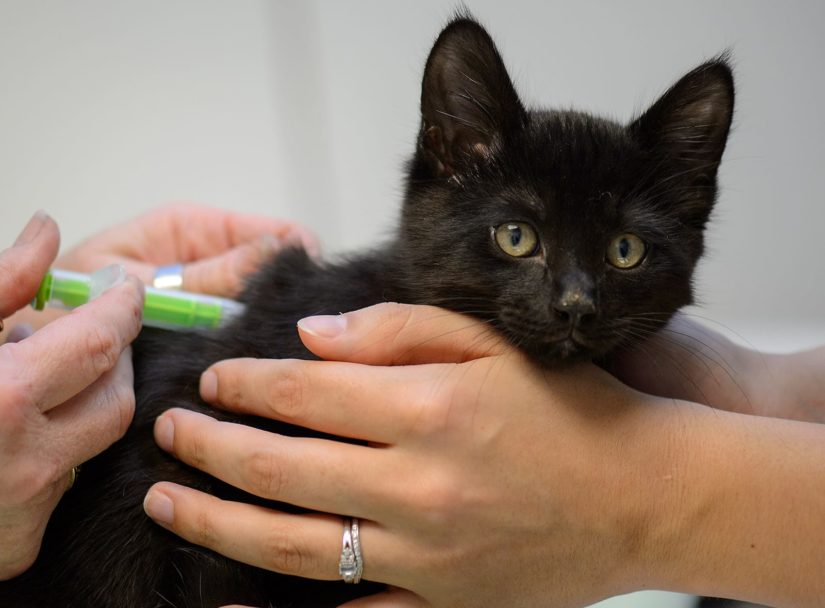
Puppies and kittens should start their vaccines at six to eight weeks of age. Your puppy or kitten will need a series of vaccines before they are four months old. Schedules for adult animals may vary depending on lifestyle and vaccines needed.
Rescue animals may require more frequent vaccines while they are in the care of an animal centre due to a high risk of exposure to disease.
Talk to your veterinarian about when to vaccinate your animal.
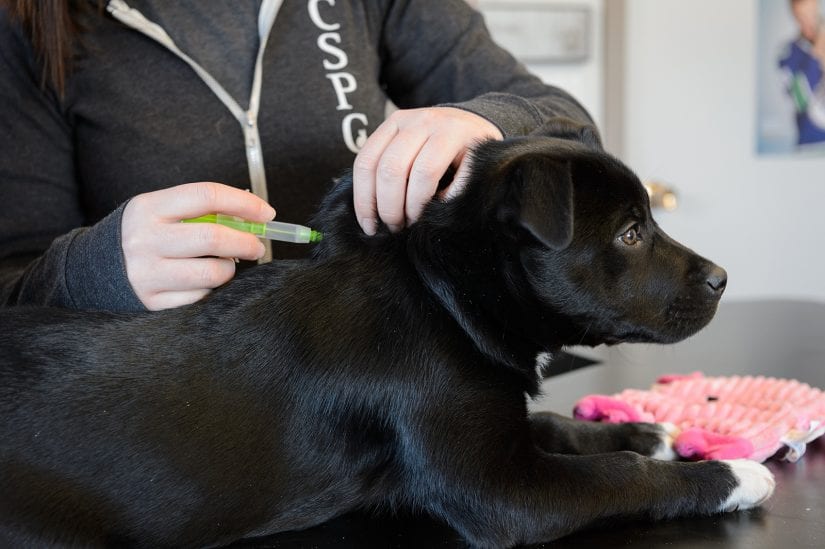
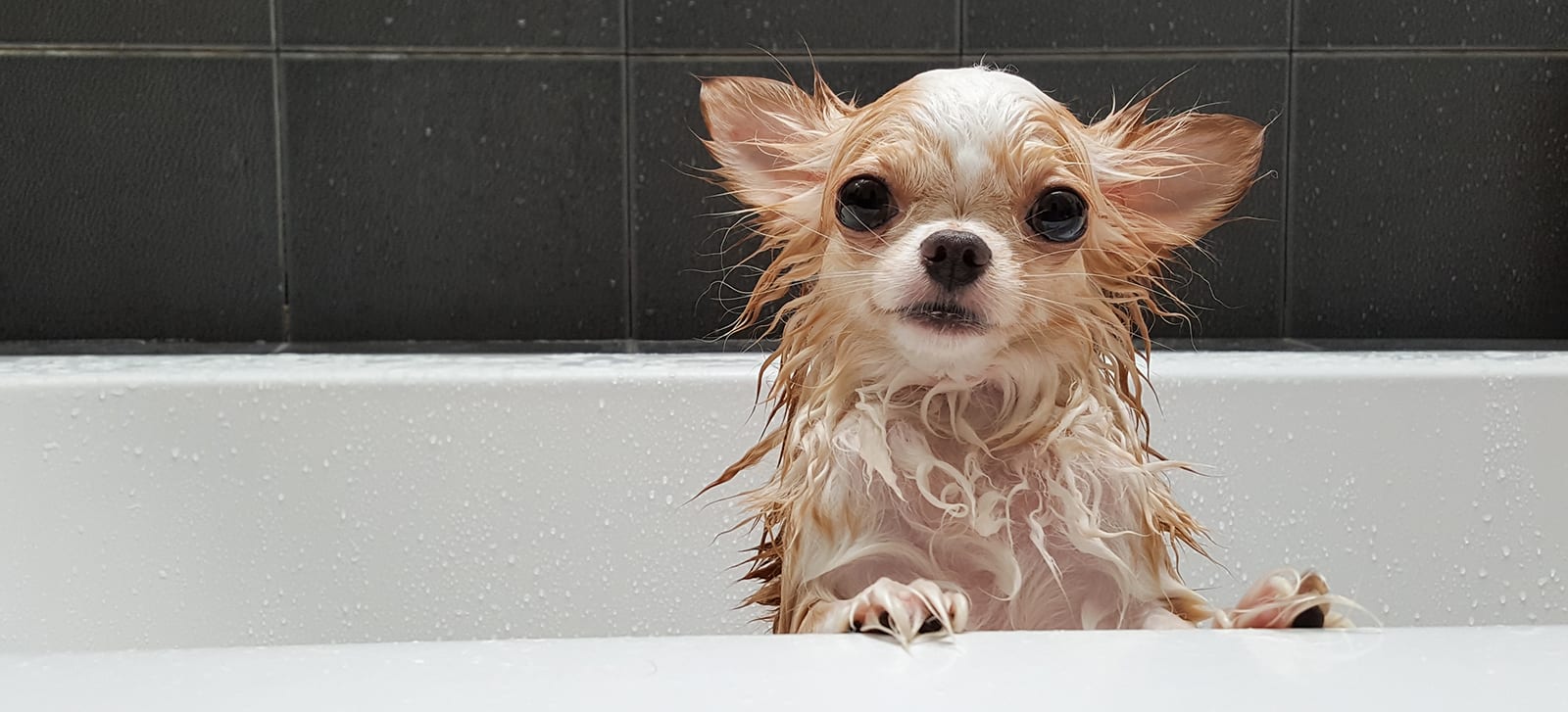
It is pretty common for a dog to get skunked – they’re curious creatures and that can lead to a spritz or a full-on soaking of an intense, foul-smelling spray from the skunk.
How to remove skunk smell:
- 1 litre of 3 per cent hydrogen peroxide
- ¼ cup baking soda
- 1 tsp liquid dish soap, such as Dawn
Combine ingredients and shampoo your pet. Rinse with water and repeat if necessary.
Skunk spray is often centred around the facial area. Avoid your pet’s eyes when using the solution on the face. If any product does get into your pet’s eyes, it’s important to rinse the area very well.
In future, be proactive
Skunks are nocturnal animals with poor eyesight and limited climbing skills. They only use their spray as a last resort when startled, cornered, or attacked. If you see a skunk, back away slowly and quietly to avoid a spray. Keep your dog on a leash when you’re out walking in low light.
Learn more about coexisting with skunks.

Most antifreeze is made from ethylene glycol. Ethylene glycol-based antifreeze tastes sweet but is highly toxic to both humans and animals. To help protect pets, wildlife and children, the provincial government passed a regulation that requires the addition of a bittering agent to all antifreeze sold at the consumer level in British Columbia. The regulation, the first of its kind in Canada, took effect in 2011.
While a bittering agent may make antifreeze less appealing, ethylene glycol is still harmful, even in small amounts. Consumers should be encouraged to use antifreeze made from propylene glycol instead. Propylene glycol-based antifreeze is slightly more expensive, but is considered non-toxic to pets and wildlife.
Antifreeze facts
- Antifreeze is the brightly coloured liquid that is poured into radiators and circulates through engines to keep them operating at safe temperatures.
- All cars, trucks, buses and farm tractors use antifreeze to help prevent their engines from freezing over in the winter and overheating in the summer.
- Conventional antifreeze contains ethylene glycol, which is very poisonous to people and animals.
- Even in the smallest amounts, antifreeze can have a very harmful and often fatal effect on your pet. A single teaspoon will kill a cat and a few tablespoons are enough to kill a medium-sized dog.
- Antifreeze leaks from automobiles and is spilled in garages and onto pavement due to careless fluid changes.
- In some instances, antifreeze has been used to deliberately poison animals as an act of cruelty.

What do I do if my pet consumes antifreeze?
Animals who have ingested antifreeze go through two stages of symptoms. If untreated, death from kidney failure will occur within days.
If you suspect your animal has ingested antifreeze, seek veterinary aid immediately. YOUR PET WILL NOT RECOVER ON THEIR OWN. Time is critical as within minutes your pet will begin to experience kidney damage. Learn what to do if your pet has consumed antifreeze.

Use animal-friendly antifreeze
Fortunately, there is a less toxic alternative to the ethylene glycol-based antifreeze that is most commonly used. Animal-friendly antifreeze contains propylene glycol and is anti-corrosive, biodegradable and recyclable. This makes it a better choice for the safety of pets and wildlife, personal health, vehicle engine protection and the environment. It may cost a few dollars more but it could save lives. Make the switch today!
Customers can request pet-friendly propylene glycol antifreeze from their automotive service centre or purchase it separately and ask that their auto centre to install the product.
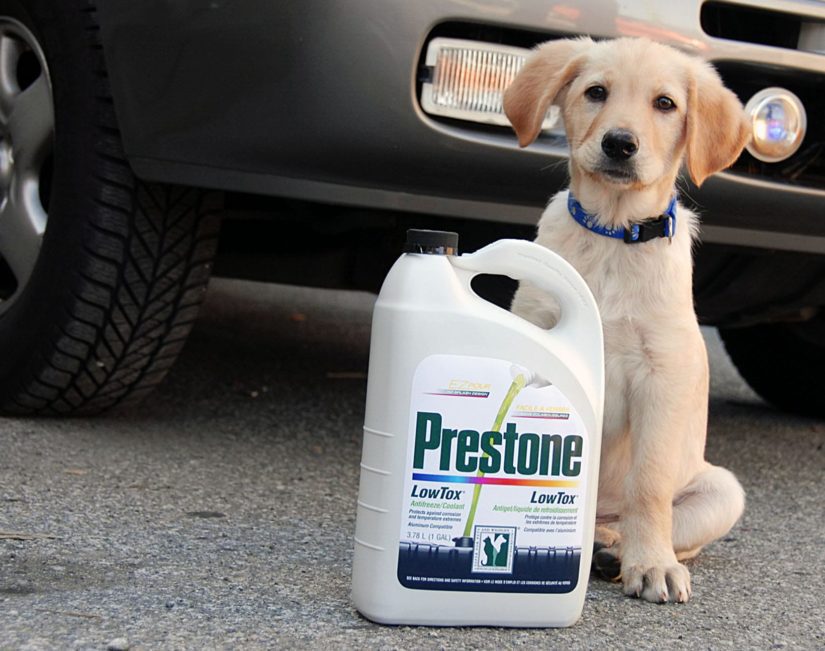
What can I do to help?
- Download our poster today and help spread the word! (PDF)
- Mop up spills and dispose of antifreeze properly.
- Take used ethylene glycol or propylene glycol antifreeze to an auto centre that recycles antifreeze.
- Never pour any used antifreeze (ethylene glycol or propylene glycol) down storm drains, sinks, toilets or on the ground. B.C. has a network of collection facilities that accept used antifreeze (ethylene glycol and propylene glycol), oil, oil filters and oil and antifreeze containers at no charge. Visit the B.C. Used Oil Management Association website to find a location near you or contact the Recycling Council of B.C. at 1-800-667-4321 for a list of outlets.
- Find out more about cold weather pet safety and how to keep your furry family members safe during cold weather.
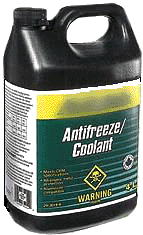 Act quickly! If you suspect your pet has consumed antifreeze you must take your pet to a veterinarian immediately. Animals who have ingested antifreeze go through two stages of symptoms. If untreated, death from kidney failure will occur within days.
Act quickly! If you suspect your pet has consumed antifreeze you must take your pet to a veterinarian immediately. Animals who have ingested antifreeze go through two stages of symptoms. If untreated, death from kidney failure will occur within days.
Stage 1
In the first hour after drinking antifreeze, animals will stagger, act uncoordinated or disorientated, possibly bumping into things. They may also try to vomit. The quicker you get to the vet the better chance your pet can be successfully treated.
Stage 2
After stage 1 it may appear your pet has recovered. However, in this stage the antifreeze is being processed by the liver, creating substances that cause permanent kidney damage as well as signs of central nervous system damage. The more antifreeze the pet has ingested the more damage. Eventually the animal will lapse into a coma. Death usually occurs within 48 hours.
Veterinary care
Immediate treatment is critical. If you suspect your pet has been poisoned, take your pet to a veterinarian. Your pet will NOT recover without treatment.
Learn about pet-friendly antifreeze
Buying an animal you have never seen in person can be dangerous (PDF). In pictures and descriptions, the animal might appear to be cute, happy and healthy. However, once you’ve exchanged money and the animal is shipped to you, you might be in trouble – search for animals to adopt from your local BC SPCA animal centre instead.
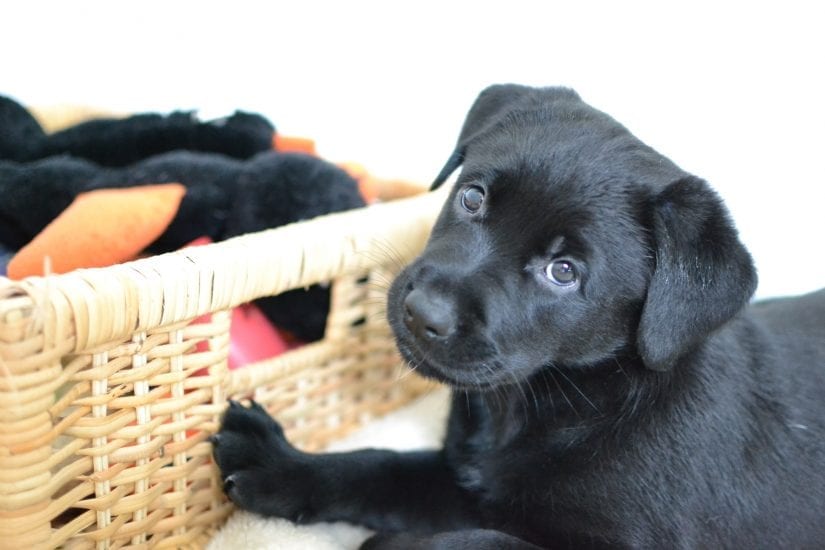
Issues related to buying an animal you’ve never met
- The animal might not be socialized to people or could have behaviour problems. This means they could bite or scratch and might never enjoy your company!
- An animal that looks healthy can be deceiving. They could have worms, parasites or even genetic diseases (PDF) with high costs and long-term heartache.
- What if the animal isn’t a good fit with you and your family? Are you prepared to put them through the process of being returned? What would you do instead?

If you’re adopting from a rescue, make sure you meet the animal in person – even if you have to drive for many hours to do so. Ask the rescue some key questions to make sure this animal is a good fit for you and your family.
If you’re buying from a breeder, visit the breeder’s home and facility. Do not trust pictures or scans of documents, these can easily be falsely created.
Is my dog jealous?
We know dogs do what works, which means they learn how best to get your attention, like jumping, for example. If your dog is doing this when there is a baby around, maybe she has learned to jump up to get your attention. This isn’t jealousy, however it does mean you need to do some training with your dog.
Caution when you think a dog is being jealous
Don’t assume that what looks like jealousy, is truly jealousy. Many dogs are not comfortable around babies and may be scared of them. If your dog seems scared, don’t force her to interact with the baby.
Reasons dogs might be nervous around babies
- Never smelled, heard or seen a baby before
- Scared by a baby crying
- Resource guarding – guarding objects they feel are valuable
Some dogs will guard things they feel are “valuable” objects. A valuable object to some dogs can be anything from a kleenex, to a sock, toy or bone. If your dog does this, be extra careful. Never allow your baby (or any child or other animal) to approach the dog when she has their valuable item.
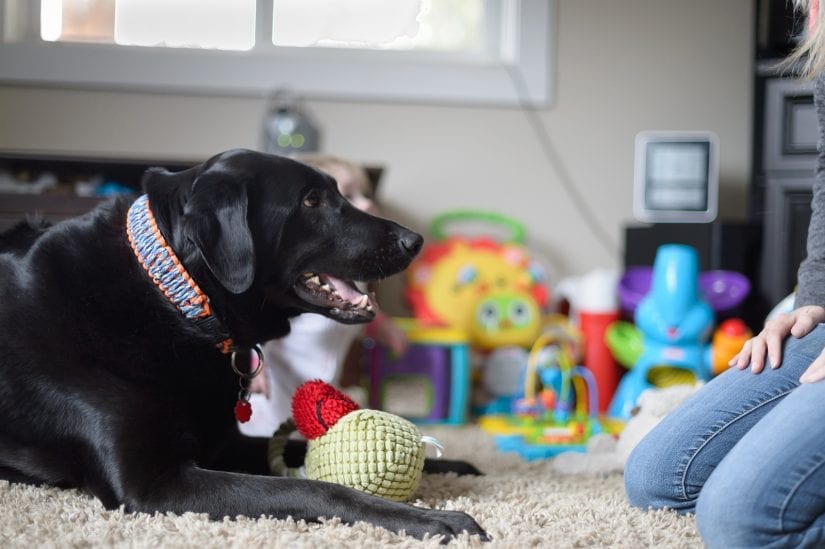
Never punish your dog
If your dog is reacting aggressively to babies, children or other dogs, you should never use verbal or physically harsh punishment. If she is doing things like growling, snarling or even snapping, she’s giving signals. She’s telling you that she isn’t comfortable. You have to listen and never punish her for her behaviour.
Seek professional help – a veterinarian, applied behaviourist or reward-based trainer experienced with dog aggression. Did you know the BC SPCA has standards for humane dog training (PDF)? We can help you find a good dog trainer through our AnimalKind program.
Tips for keeping baby and dog happy together
- Before bringing baby home, help your dog get used to the sounds and smells of babies.
- Do basic training with the dog. Teach her do things like leave it, go out of a room, settle, etc.
- Set up your home with gates and a safe place (such as a crate, bed, or room) for the dog to retreat to.
- Use praise and treats to help the dog associate the baby with good things.
- Don’t reward attention-seeking behaviour like barking, jumping and begging.
- Include the dog in walks and playtime with baby.
- Let the dog get used to the baby gradually and at her own pace. Never force them to interact.
- Never leave your dog and baby alone together, even if your dog is small.
- Pay attention to what your dog is telling you. If your dog is afraid or acts aggressive, seek help from a professional.
What is the rabies virus?
Rabies is a viral disease of warm-blooded animals that can be transmitted to humans. It is caused by a virus of the Rhabdoviridae family, which attacks the central nervous system and eventually affects the brain. Rabies is almost always fatal in animals and people once symptoms occur.
How is rabies transmitted between animals and humans?
The virus is transmitted through close contact with the saliva of infected animals, most often by a bite or scratch. It can also be transmitted by licks on broken skin or mucous membranes, such as those in the eyes, nasal cavity or mouth. In very rare cases, person-to-person transmission has occurred when saliva droplets became aerial. Bat bites can inflict small wounds and go unnoticed.
Who is at risk of being infected by rabies?
Bats are the only known wild carrier of rabies in B.C. Like cats and dogs, raccoons, coyotes, skunks, farm animals, and any other mammals are capable of contracting the rabies virus, but are not considered carriers in B.C.
In other provinces like Ontario, raccoons, coyotes, skunks and foxes are wild carriers of rabies. In B.C., however, the only carrier of rabies is bats; no raccoons or skunks in B.C. have ever transmitted rabies.
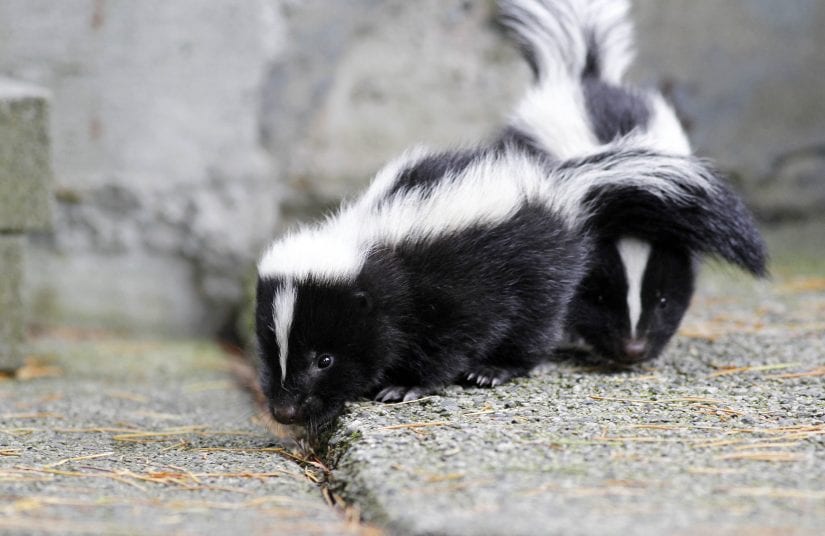
How common is rabies in bats in B.C.?
It is estimated that one per cent of bats in the wild in B.C. carry rabies. In June 2004, four skunks in Stanley Park in Vancouver tested positive for the rabies virus. However, it was discovered that they all carried the bat strain of rabies; likely they had all been in contact with a rabid bat.

Cases of human rabies infection in Canada
In the past 25 years, five people in Canada have died of rabies infection: one in Quebec (2000), one in Alberta (2007), one in Ontario (2012) and two in British Columbia (2003 and 2019). In the Ontario case, rabies exposure occurred outside the country. These were the first cases of human rabies in Canada since 1985.
The most likely source of infection for both B.C. individuals was unrecognized bat exposure. Without wound cleansing or post-exposure vaccinations, the potential incidence of rabies in exposed humans can be very high.
Does my pet need a rabies vaccine?
Dogs and cats account for fewer than five per cent of all animal rabies cases in Canada. However, rabies presents a serious public health risk, and even indoor pets could come in contact with a bat. Some pets also need the vaccine for travel. Ask your vet whether your pet should be vaccinated.
What if my pet brings a bat home?
If your pet brings home a bat, you should take your pet to a veterinarian. If the bat is available, your vet may send it for rabies testing. Additionally, your vet may vaccinate your pet against rabies and/or ask you to keep your pet in your home for several months to see if they develop signs of rabies.
If any person in your household has touched a bat with bare skin, seek medical attention from a doctor or local public health unit immediately.
What will happen to the bat?
The bat may be euthanized and sent for testing. As of April 1, 2014, CFIA veterinary inspectors are no longer involved in species collection activities. However, the CFIA continues to perform and cover the cost for rabies laboratory testing involving domestic and wild animals and humans. This is vital as once the symptoms of rabies (flu-like including fever, headache and fatigue, progressing to gastrointestinal and central nervous system problems) start to appear, there is no treatment and the disease is almost always fatal. However, wound cleansing and immunizations, done as soon as possible after suspected contact with an animal, can prevent the onset of rabies in virtually 100 per cent of exposures.
What to do if there has been contact with a bat
Bat-to-person contact?
If treatment is given promptly after being exposed to (any bare skin contact) or bitten by a bat, the illness may be prevented by taking the following actions:
- Immediately wash the wound or exposed surface with soap and water for 10 minutes and cover the area with a clean bandage.
- Remove any clothing that may have been contaminated.
- Immediately call your doctor and local health authority for advice.
Bat-to-pet contact?
Please contact your veterinarian to have your pet vaccinated and discuss whether a period of isolation/observation is required for your pet. If the bat is available, your veterinarian may send it for rabies testing.
Found an injured bat?
No matter how injured, a bat should never be touched with bare hands. Please refrain from nudging or picking the bat up.
Injured bats can be rehabilitated by professionals able to take the necessary precautions against rabies transmission. Call the BC SPCA Animal Helpline at 1-855-622-7722 for advice on safely containing bats and finding a wildlife rehabilitator.
Allowing a female cat or dog to produce a litter does not have any benefits to the animal. Animals who go through heat cycles and pregnancy are at higher risk for uterine and mammary problems, including mammary cancer, which can be fatal.
There are health risks to the mother during the pregnancy and when giving birth. Proper pre-natal care, emergency care for birth complications, and proper newborn care are expensive and time-consuming.
Learn more about the benefits of spaying and neutering your pet.

Generally, spaying or neutering your pet will not change its personality. If there are any effects on behaviour, they tend to be positive (reducing unwanted behaviour). Spaying or neutering will not change your pet’s affection level or playfulness.
For females, there is typically no change at all. For males, there may be a reduction in some aggressive and roaming behaviours. If you have more than one pet, you will find they often get along much better if they are all spayed or neutered.
Learn more about the benefits of spaying and neutering your pet.
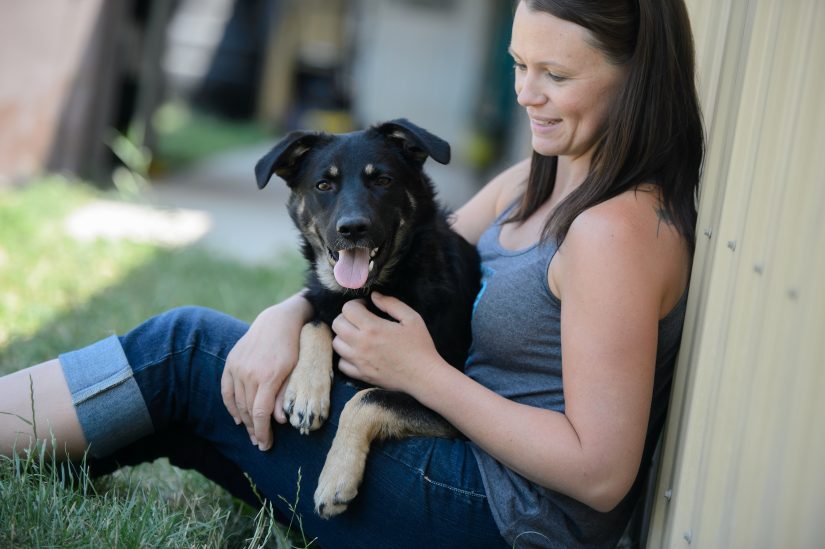
Most unintentional litters (particularly with cats) occur because guardians waited too long to have the surgery done. The usual recommendation is before six months of age for cats, and before six and a half months for dogs. Consult your veterinarian to determine the best time for your pet. Female cats and dogs do not have to have a litter before being fixed.
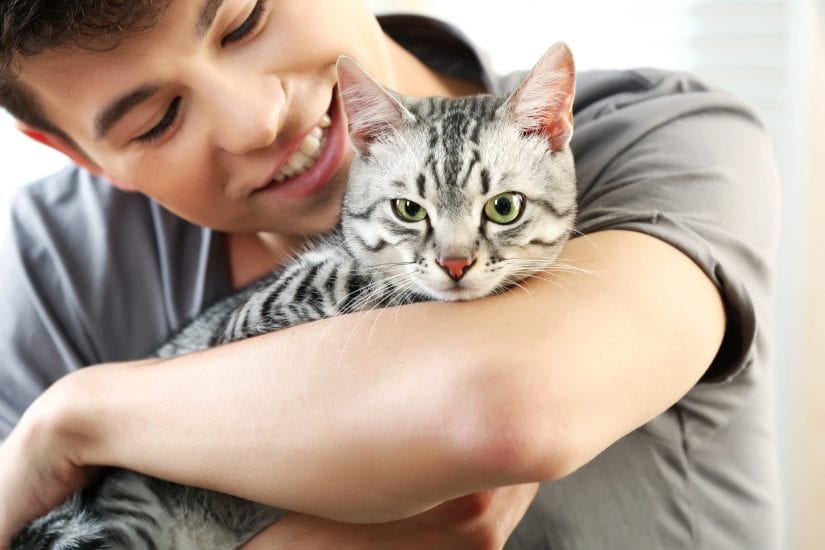
The BC SPCA supports early age spay/neuter procedures for dogs and cats. Pediatric sterilization prevents excess litters by ensuring animals are sterilized before adoption. This helps combat pet overpopulation and euthanasia of unwanted animals. All major professional, academic, and animal welfare organizations in North America support pediatric spay/neuter for shelter animals.
The BC SPCA will continue to promote other methods of combating pet overpopulation, including education and public awareness campaigns, non-surgical methods of sterilization, traditional spay/neuter initiatives and behaviour training.
The BC SPCA believes pediatric spay/neuter to be appropriate with the following qualifications:
- The procedure takes place between 8 and 16 weeks of age
- The animal is judged to be clinically normal and healthy prior to surgery
- Proper surgical protocols specific to these young animals are employed
- Post-surgery complications receive special attention
Register your pet’s microchip, tattoo or license with the BC Pet Registry. Submitting your pet’s information to this provincial database ensures your pet is traceable by all participating veterinarians, animal control agencies and humane societies.
Find out more about how permanent pet ID can help ensure peace of mind.
Update Your Information
Have you moved or changed your phone number? Keeping your contact information up-to-date is easy with the BC Pet Registry. Registered users can also add additional forms of ID to their existing pet profile free of charge.
To report a lost pet, please contact your nearest BC SPCA branch.

Dogs communicate with us through their behaviour. Peeing on your stuff may mean your dog is trying to tell you something. Dogs don’t do it because they’re mad!

Is your dog house trained?
If your dog is house trained and this is a new behaviour, get a vet exam as there may be a medical issue at play.
If your dog has always had accidents then it’s best to restart your house training. Learn how to house train your dog.
Urine marking
Some dogs will pee on things around your house or outside to communicate, find a partner or to let others know this is their home.
If your dog is urine marking, start by house training him again. Always make sure his bladder is empty before you leave him alone. Reward him for going outside. If he’s not neutered, ask your vet about whether this might help.
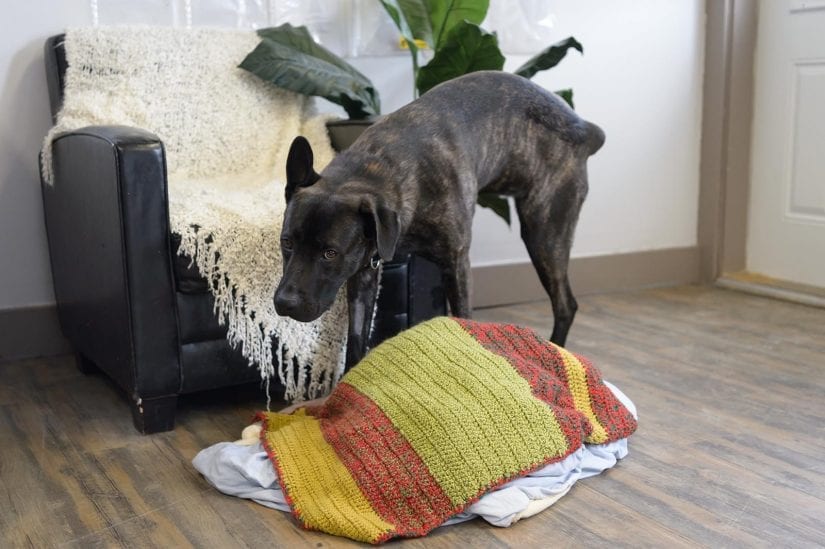
Does your dog have anxiety when you leave?
If you think your dog has separation anxiety, see your veterinarian for a diagnosis.
Signs your dog may be suffering from separation anxiety:
- Panting, hiding, trembling, lack of appetite when you get ready to leave
- Damage to your front door, back door or windows
- Self-injury (bleeding paws, broken teeth, bleeding from mouth)
- Refusal to eat when you’re not home, even high value treats (but eats them when you’re home)
- See your veterinarian if you suspect your dog is suffering from separation anxiety.

No. Your pet will actually benefit from spaying or neutering, because he or she will lead a healthier and longer life. Pets become fat and lazy as a result of overeating and a lack of exercise, not from spaying or neutering. Furthermore, spaying a female eliminates the possibility of her developing uterine and/or ovarian cancer and greatly reduces the chance of breast cancer. Neutering a male eliminates the risk of testicular cancer.
